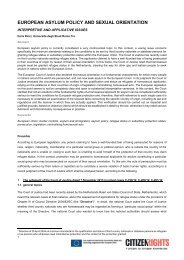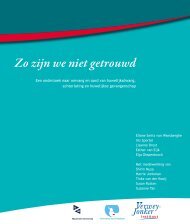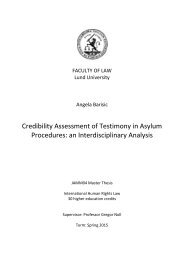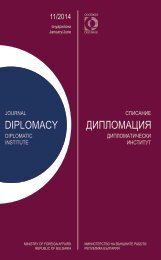AEMI
AEMI-2016-web
AEMI-2016-web
You also want an ePaper? Increase the reach of your titles
YUMPU automatically turns print PDFs into web optimized ePapers that Google loves.
134 <strong>AEMI</strong> JOURNAL 2015<br />
nomics of the Baby Shortage’ by Posner<br />
and Landes (1978), the market forces<br />
and financial exchanges that drove ICA<br />
were exposed for the first time. It was<br />
followed by a wave of criticism because<br />
opponents argued that when applying<br />
an economic framework to adoption, it<br />
would turn adoptable children into saleable<br />
objects in a mechanical economics<br />
analysis (Goodwin, 2010, 4). Moreover,<br />
within the human trafficking discourse,<br />
this issue received more attention and<br />
it became clearer that regulations were<br />
required in ICA in order to protect children<br />
(Meier, 2008; Smolin, 2004).<br />
From this perspective, four international<br />
normative frameworks were<br />
established. First, the United Nations<br />
Declaration on Social and Legal Principles<br />
relating to the Protection and<br />
Welfare of Children, with Special Reference<br />
to Foster Placement and Adoption<br />
Nationally and Internationally, was<br />
established in 1986 and recognizes that<br />
an adopted child should not be deprived<br />
of his or her name, nationality or legal<br />
representative (art. 8). It also established<br />
the principle of subsidiarity, which<br />
means that ICA should only take place<br />
when domestic suitable adoptive parents<br />
cannot be found (art. 17).<br />
Second, the Convention of the Rights<br />
of the Child (CRC) entered into force in<br />
1990 and dedicates several paragraphs<br />
to the phenomenon ICA. The most important<br />
one is Article 21 (d), which indicates<br />
that State parties should take all<br />
measures to ensure that the placement<br />
of children does not result in improper<br />
financial gains for those involved. The<br />
Convention is the most widely ratified<br />
treaty in history as 193 States are party<br />
to it.<br />
Third, the Optional Protocol to the<br />
Convention on the Rights of the Child<br />
on the Sale of Children, Child Prostitution<br />
and Child Pornography (from here<br />
referred to as the Optional Protocol)<br />
was adopted in 2000, came into force in<br />
2002 and is ratified by 117 states. The<br />
first paragraph of article 3 calls on States<br />
parties to ensure that coercive adoption<br />
is completely covered under criminal<br />
law. Thus, the article criminalizes the<br />
act of ‘improperly inducing consent, as<br />
an intermediary, for the adoption of a<br />
child’ (art. 3 (c)). Furthermore, paragraph<br />
5 of the same article demands that<br />
States parties should take all appropriate<br />
administrative and legal measures to ensure<br />
all individuals involved in ICA act<br />
in conformity with international legal<br />
instruments.<br />
Fourth, the Convention on Protection<br />
of Children and Co-operation in<br />
Respect of Intercountry Adoption (the<br />
Hague Convention) was adopted in<br />
1993 and came into force in 1995. It<br />
is considered as the major multilateral<br />
instrument regulating ICA. As chapter<br />
1 (art. 1) describes, the Convention has<br />
three principal objectives:<br />
-‘to establish safeguards to ensure that<br />
intercountry adoptions take place in the<br />
best interests of the child and with respect<br />
for his or her fundamental rights<br />
as recognized in international law;<br />
- to establish a system of co-operation<br />
amongst Contracting States to ensure<br />
that those safeguards are respected and<br />
thereby prevent the abduction, the sale<br />
of, or traffic in children;<br />
- to secure the recognition in Contracting<br />
States of adoptions made in accordance<br />
with the Convention.’<br />
The second chapter (art. 4 and 5) out-









